KJ Scott (KJ)
Ottawa, Ontario, Canada
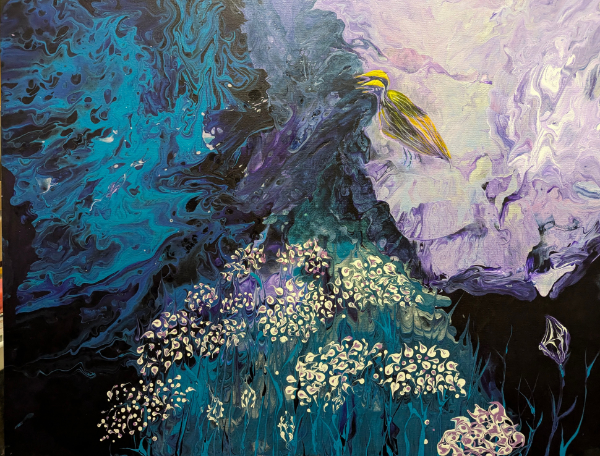
KJScott-study6-birds-acrylic on canvas-61cmx76cm-20x30in-2025-03-04-sm
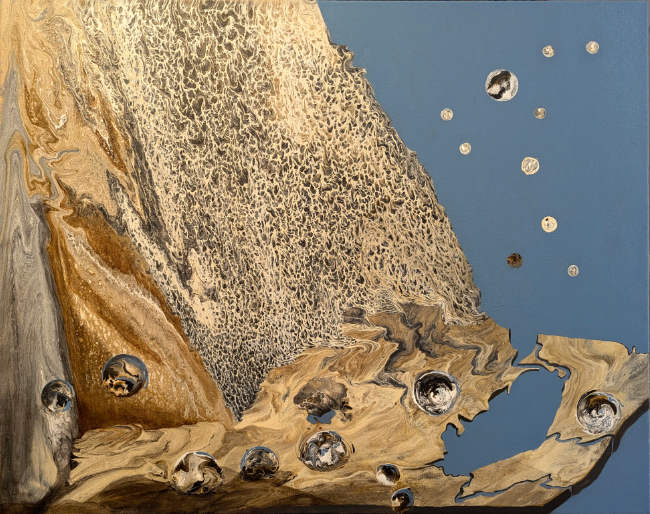
Quedje-Fractured-24x36-51x61cm-acrylic on canvas-reduced
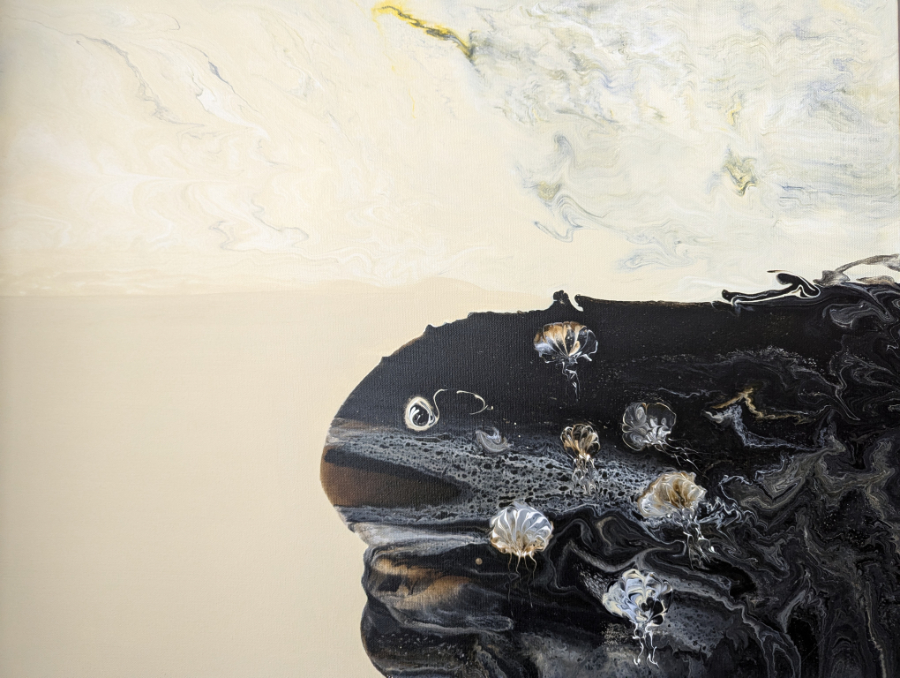
Quedje-Fauna-24x36-51x61cm-acrylic on canvas
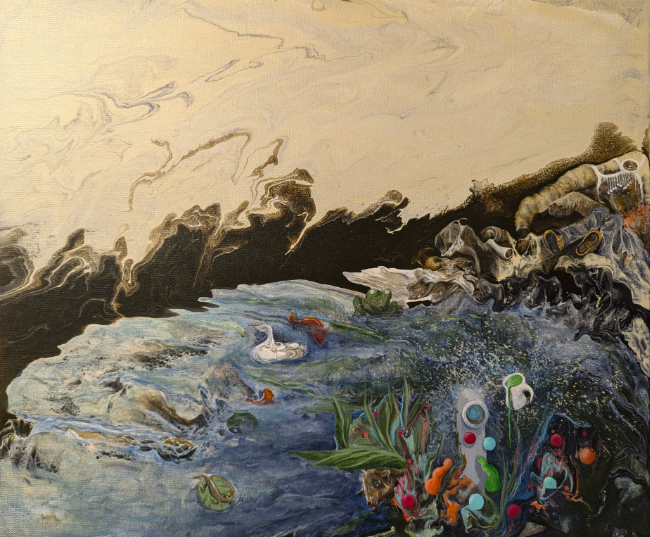
Quedje_An Unsettling Collaboration_18x24in_46x60cm_acrylic on canvass
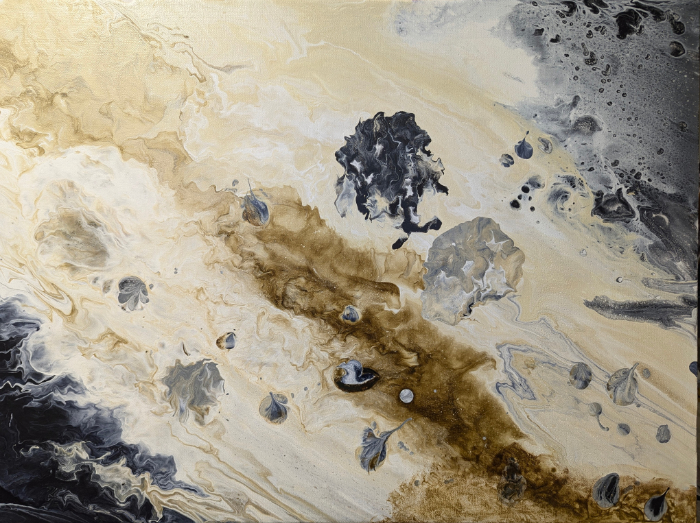
Quedje_Rebirth-Flora and Fauna_24x36in_46x60cm_acrylic on canvas
Biography
“Art has always been a fundamental part of my being, a constant thread weaving through my life, regardless of the twists and turns it has taken. The pull of creative expression is undeniable.”
KJ Scott is a Canadian contemporary painter living in Ottawa, Ontario, whose artistic journey began at an early age. She was raised in a family that immersed themselves in the arts, as makers or consumers imprinting the importance of art early on.
Over the past forty years, she has studied at various art schools and earned a degree in Fine Art. While working as a marketer in the visual and performing arts, she often pursued sidelines in diverse creative fields, including metalsmithing, interior decorating, and graphic design.
After a career of supporting rather than pursuing the arts, KJ has returned to her first love, painting. Observing artists through the years has only pushed her more towards pursuing the arts as an artist.
Having been lucky enough to travel often, usually without luxury, has given her great insight into the world and its people.
Now, she channels her life experience into her work, often exploring themes of humanity’s role in its own destruction and the planet’s persistent cycle of renewal and transformation.
Related education
● Bachelor of Art, University of Guelph, Fine Art and English, 1989
● Editorial Illustration, Ontario College of Art and Design, 1991
● Interior Design, Algonquin College, 1998
Artist’s Statement
“It is my wish that through my art, people will think about nature as I do, and come to a hopeful place about its future. Nature will survive and rejuvenate itself although it may be very different than it is today.”
Artificial intelligence is rushing in at breakneck speed with no more controls in place than the previous eras of industrialization. With or without us, nature will rebuild, as it always does. What that will look like is interesting for me to imagine through my art.
One reason why I enjoy painting is that it is a uniquely human act. Artificial intelligence can not match it because only humans can create truly unique ideas, evoke emotion, and portray complexity. I feel a responsibility to preserve and nurture this capacity for creativity.
While pursuing how to best express these concerns, I have discovered that I enjoy embracing the freedom of automatism and creating in the fringes of surrealism, inventing characters and scenes that push against our reality.
I know I’m on the right path with my art when I’m in the zone, a state of flow. In my interpretation, flow is the true essence of artistic automatism. You could call it being in the groove or in the moment, but it’s more than that. It’s being in sync with the feelings and thoughts while letting the materials lead, at least for a while.
“Flow” is also a technical term, a way I now paint with plenty of fluidity. It is also how I previously worked with silver, bringing the metal to melting point. When the materials are fluid, they reveal their true identity. Working in acrylics, I approach each new piece with a seed of an idea, knowing what I want to express. That seed grows organically as the piece takes shape. Through observation and reflection, a “conversation” emerges between myself and the materials and a story emerges.
Digital tools often assist me in refining elements and concepts. They are only a means of research and efficiency, not replacements for the depth of human creativity.
Influences
I’m most influenced by nature, visual art and film. The more imaginative the work is, the more it resonates with me. James Cameron created a fantastical world soaked in blue, beauty and light, inspired by the ocean he knows so well. Marc Chagall, so different for his time, was able to reduce dimensions while advancing feelings. Yorgos Lanthimos’ pig-dog and duck-goat creations in Poor Things may spin off of Frankenstein but take it next level. Inka Essenhigh’s distorted realities and twisted mythologies beg the viewer to imagine narratives that one might never do without her prompts.
These things were all new in their time. They were all borne from a human mind. Only artists can do these things. Only humans can push the boundaries of their brains to create things that are truly unique. For now. And hopefully, if we control our feeding of the machines and instead feed our minds, forever.
